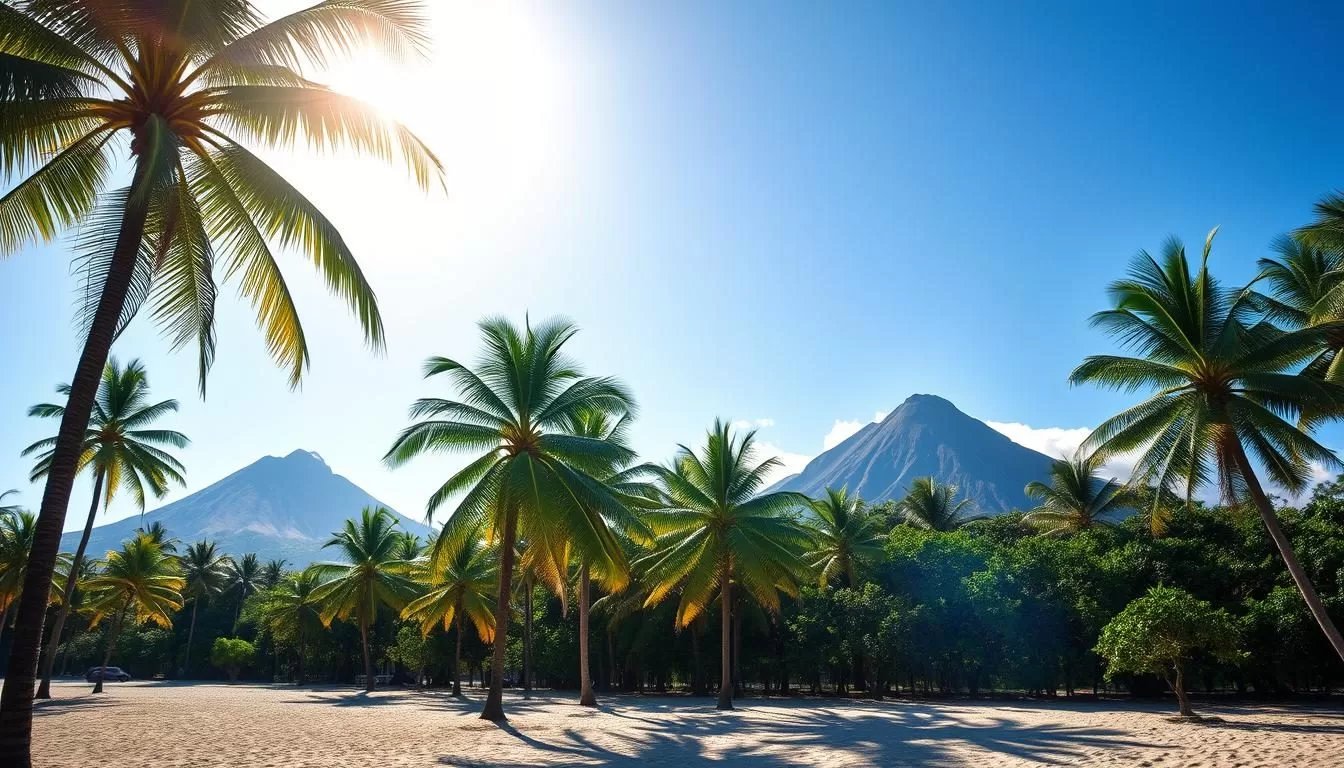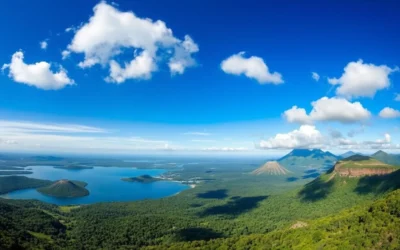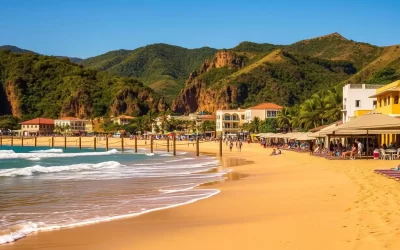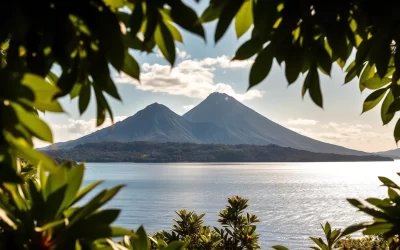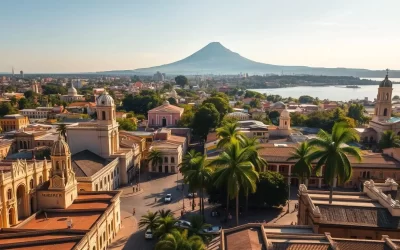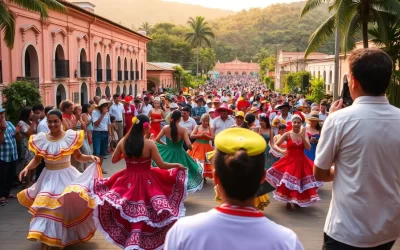✓ Tours & Activities ✓ Tours & Activities
Planning a trip to Nicaragua can be a thrilling experience, with its stunning mix of pristine beaches, volcanic landscapes, colonial cities, and lush rainforests. However, the country’s diverse geography and climate mean that the weather can significantly impact your travel plans.
Understanding Nicaragua’s two distinct seasons – dry and rainy – is crucial for making the most of your visit. The best time to visit depends largely on your travel preferences and planned activities.
Whether you’re looking for the dry season’s sunny days or the green season’s lush landscapes, this guide will help you navigate Nicaragua’s climate variations to determine the ideal months for your trip.
Understanding Nicaragua’s Climate
With a tropical climate, Nicaragua has two primary seasons that define the country’s weather patterns throughout the year. Understanding these seasons is crucial for planning a trip to this beautiful country.
The Two Distinct Seasons
Nicaragua’s climate is characterized by a dry season, known as “verano,” and a rainy season, or “invierno.” The dry season runs from mid-November to early May, while the wet season spans from mid-May to early November, with October being the rainiest month.
| Season | Months | Characteristics |
|---|---|---|
| Dry Season (Verano) | Mid-November to Early May | Hot, Windy, Dusty |
| Rainy Season (Invierno) | Mid-May to Early November | High Precipitation, October is the Rainiest |
Regional Climate Variations
The climate varies significantly across Nicaragua’s three distinct geographical regions: the Pacific lowlands, the mountains, and the Caribbean lowlands. The Caribbean coast is notably the wettest area in Central America, receiving up to 250 inches of rainfall annually.
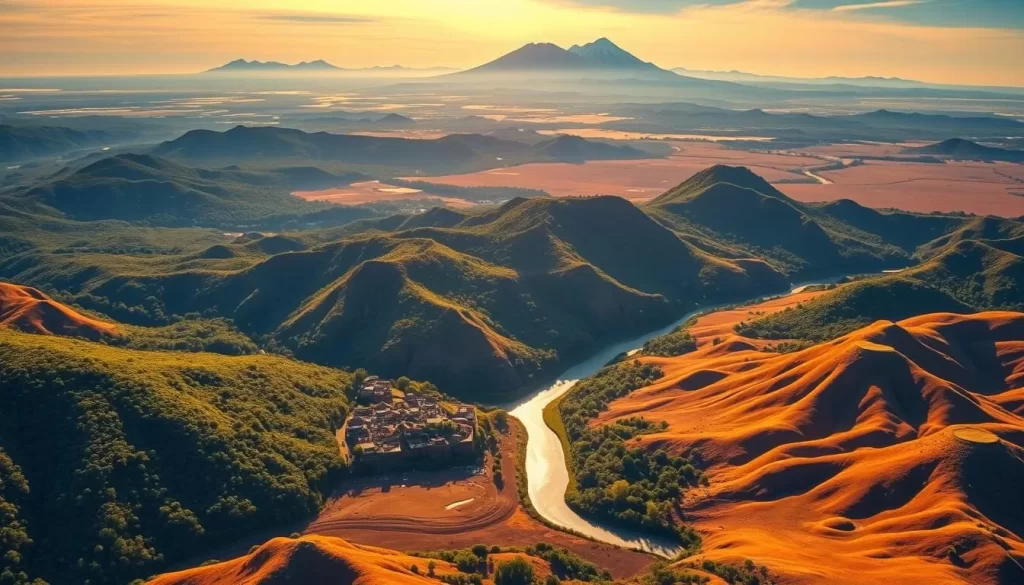
When planning to visit Nicaragua, it’s essential to consider these regional climate variations to make the most of your trip during your chosen time of year.
Dry Season in Nicaragua: November to April
From November to April, Nicaragua experiences its dry season, characterized by sunny days and minimal rainfall. This period, locally known as verano or summer, is marked by hot, windy, and dusty conditions.
Weather Patterns and Temperatures
During the dry season, you can expect temperatures to range from 75-90°F (24-32°C). The Pacific coast and lowland areas are usually hotter, while the highland regions offer more moderate temperatures. The dry heat during this time makes it an ideal period for outdoor activities.
Pros of Visiting During Dry Season
Visiting Nicaragua during the dry season has several advantages. You can enjoy:
- Predictable weather, ideal for hiking volcanoes and exploring colonial cities
- Easier access to remote areas due to better road conditions
- Stunning sunsets and clear skies, perfect for photography
- Reliable beach weather, making it a peak season for tourists
The dry season is the best time to visit Nicaragua if you prefer sunny days and are looking for outdoor adventures.
Cons of Visiting During Dry Season
However, there are some downsides to visiting Nicaragua during the dry season. These include:
- Higher prices for accommodations due to peak tourist season
- Crowded attractions, requiring advance booking
- A drier landscape, which may be less appealing to those seeking lush scenery
- Windy conditions that can trigger allergies in sensitive travelers
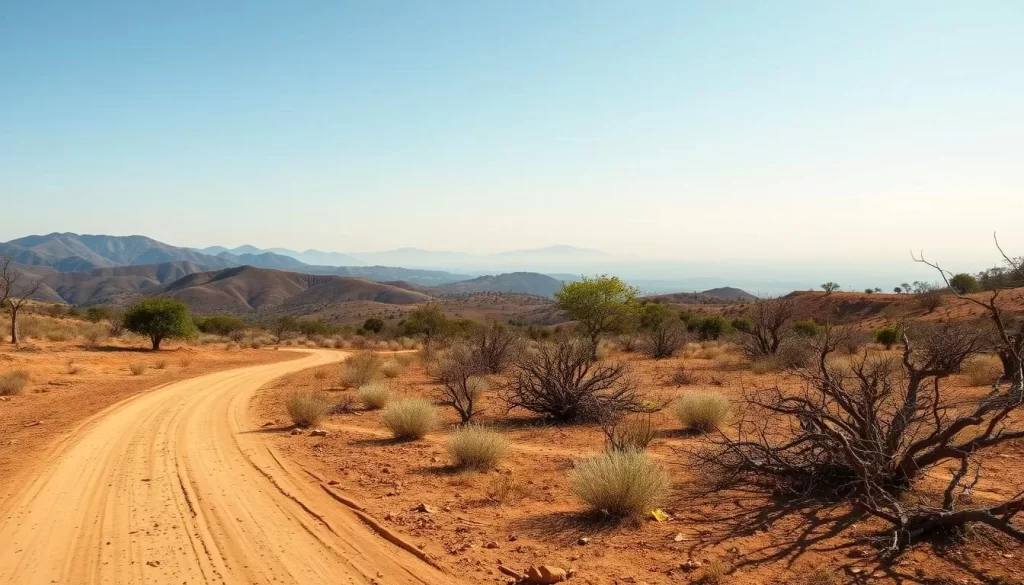
Rainy Season in Nicaragua: May to October
Visiting Nicaragua during its rainy season, from May to October, can be a rewarding experience. The country’s lush landscapes and vibrant culture are even more pronounced during this time, offering a unique perspective for travelers.
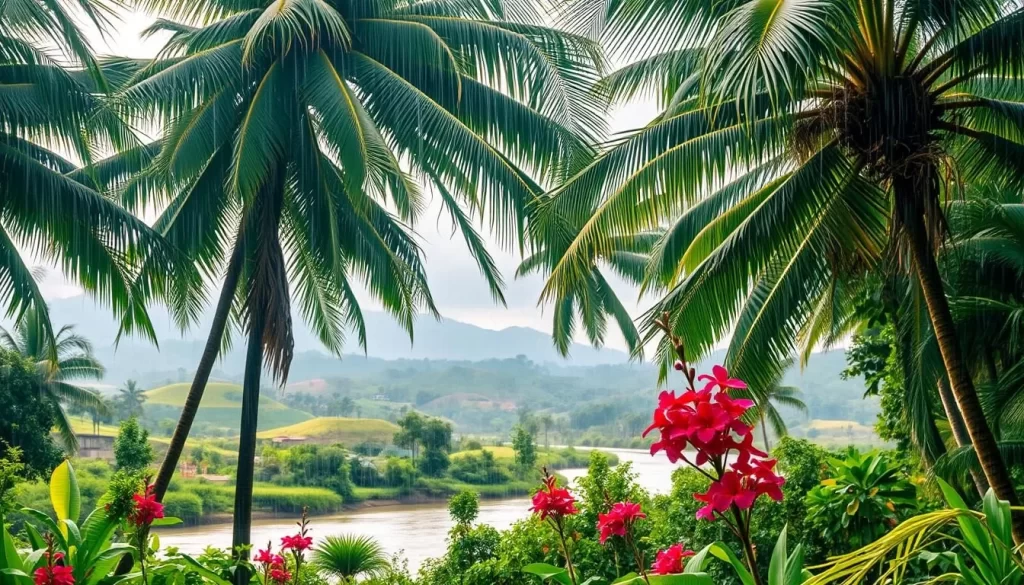
What to Expect During Wet Months
During the rainy season, Nicaragua experiences a significant increase in precipitation, with October being the rainiest month. However, it’s essential to understand that the rain doesn’t fall continuously throughout the day. Typically, you’ll encounter sunny mornings followed by afternoon showers that clear up by evening. The rain patterns can vary by region, but the overall climate remains relatively warm, with average temperatures ranging from 75-85°F.
Advantages of Green Season Travel
Traveling to Nicaragua during the green season has its advantages. The lush landscapes and abundant wildlife create spectacular photo opportunities. Moreover, the wet months offer a more serene experience at popular tourist sites due to fewer crowds. You can also enjoy lower prices, with accommodations being up to 30% less expensive. Additionally, witnessing sea turtle nesting along the Pacific coast is a unique experience.
Challenges and Considerations
While the rainy season has its benefits, there are also challenges to consider. The heaviest rains occur from September to October, coinciding with hurricane season, which can make travel more difficult, especially along the Caribbean coast. Furthermore, the increased moisture brings more mosquitoes and insects, making it essential to pack appropriate repellent. Some remote areas may become harder to access due to heavy rains, potentially limiting your itinerary.
Nicaragua: Best Months for a Weather-Savvy Trip
For travelers to Nicaragua, timing is everything, as the country’s weather can significantly impact your vacation. Understanding the best time to visit can make all the difference in enjoying your trip to the fullest.
December to January: The Sweet Spot
Visiting Nicaragua during December to January is considered the “sweet spot” because it offers a perfect blend of the lush landscapes from the ending rainy season and the clear, sunny skies of the beginning dry season. You’ll enjoy moderate temperatures, ranging from 75-80°F (24-27°C), lower humidity levels, and minimal rainfall, making it ideal for exploring both cities and natural attractions.
February to April: Beach and Adventure Time
If you’re looking for a beach vacation or adventure activities, February through April is the best time. The dry season provides consistent sunshine and warm waters, making it perfect for visiting popular coastal destinations like San Juan del Sur. These months are also ideal for activities such as volcano boarding at Cerro Negro and hiking through nature reserves.
May to August: Budget-Friendly Options
For budget-conscious travelers, May through August can be an attractive option. Although it’s the early rainy season, you can still expect plenty of sunshine, with occasional afternoon showers. This period offers significantly lower prices and fewer crowds, making it an excellent time for cultural immersion and experiencing Nicaragua’s lush landscapes.
| Period | Weather Conditions | Activities | Advantages |
|---|---|---|---|
| December to January | Moderate temperatures, lower humidity | City exploration, natural attractions | Balanced weather, fewer crowds |
| February to April | Consistent sunshine, warm waters | Beach vacations, adventure activities | Ideal for beachgoers and adventure seekers |
| May to August | Occasional showers, plenty of sunshine | Cultural immersion, wildlife viewing | Budget-friendly, fewer tourists |
Ultimately, the best time to visit Nicaragua depends on your priorities, whether you value perfect weather, budget considerations, or specific activities. By choosing the right time for your trip, you can ensure a memorable and enjoyable experience in this beautiful country.
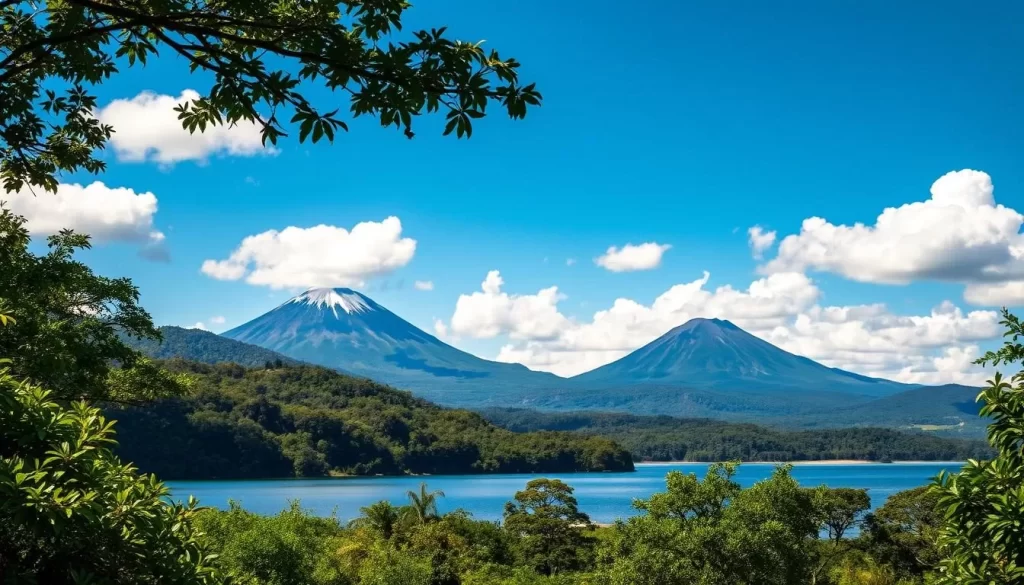
Conclusion
The best trip to Nicaragua is the one you’re taking, regardless of the season. Nicaragua offers incredible travel experiences year-round, with each season providing its own unique advantages. The key is matching your visit to your personal preferences and planned activities.
For most travelers, the best time to visit Nicaragua is between December and January, enjoying the “sweet spot” between seasons with lush landscapes and stable weather patterns. Alternatively, beach lovers and adventure seekers may prefer February through April for the most reliable weather, while budget-conscious travelers might consider May through August for lower prices and vibrant green landscapes.
Ultimately, a weather-savvy trip to Nicaragua involves understanding the climate patterns and planning accordingly. Whether you’re exploring colonial cities, hiking volcanoes, or relaxing on beaches, Nicaragua’s diverse offerings ensure a memorable experience. By being flexible and open-minded, you can enjoy the beauty that comes with both the dry and rainy seasons, making your trip to this incredible country truly unforgettable.
The above is subject to change.
Check back often to TRAVEL.COM for the latest travel tips and deals.
